Folding tables in the kitchen: advantages and disadvantages, varieties and recommendations for installation
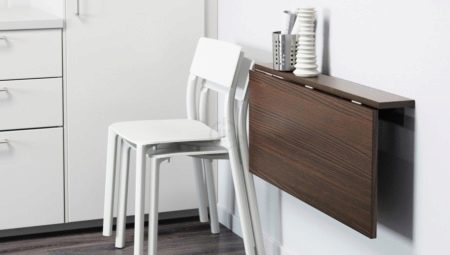
The kitchen is a small room, especially in small apartments. Often there is not enough room for a dining table. In such situations, folding (hanging) tables are the best solution. They are quite simple to make with your own hands.

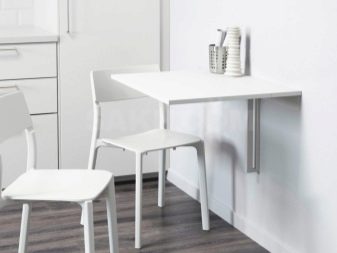
Advantages and disadvantages
Folding tables for the kitchen - sometimes the only right decision to arrange a small space. This option has many positive qualities.
- The main advantage of such furniture is space saving. Folding tables can easily be folded and removed if they are not needed.
- Easy assembly. There is no need to turn to furniture makers; you can easily construct and assemble such a structure yourself.
- Variety of solutions. To date, a large number of design ideas for hanging kitchen furniture is known.
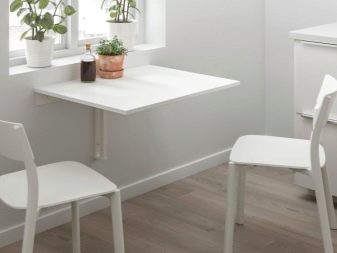
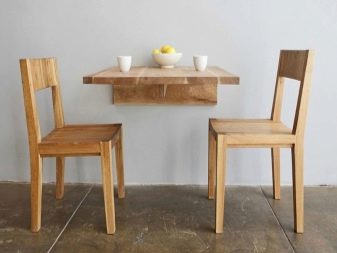
But there are some disadvantages.
- Small size. An overly dimensional worktop will also have a tangible weight, under the influence of which the fasteners will loosen.
- Limited use of material. The best option is a wooden folding table. Glass is practically not used because of its fragility and excessive trauma when broken, and metal products are too heavy.
By the way, glass tables are very difficult to make at home, because it should be quite thick and preferably tempered.

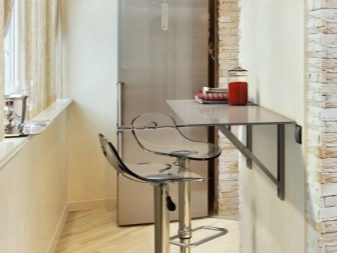
If you want a natural wood table, Choose a material that will not deform over time. Many advise using maple or oak wood as the material.Also stock up with varnish to cover the surface of the table to avoid splintering.
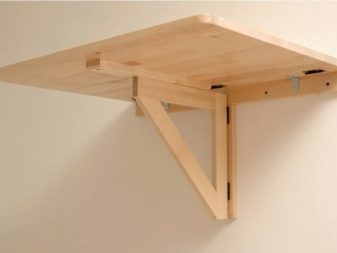
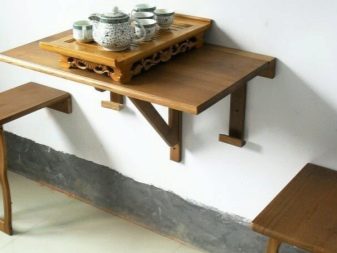
Kinds
Folding tables can be quite varied. Depending on the purpose, such structures can be divided into several types.
- Dining - tables for eating.
- Kitchen Worktops - peeling, cutting vegetables, fruits and other products and cooking.
- Decorative furnishings. Usually these are small tables that serve to decorate the kitchen, sometimes they are used to drink coffee or tea. This type also includes structures suspended from the ceiling.
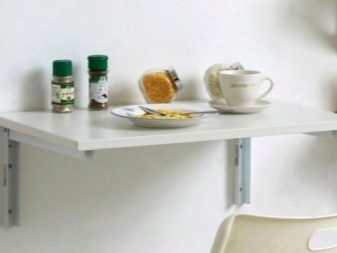
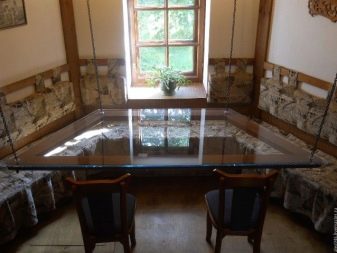
According to the type of construction, models of hanging tables can be divided into stationary and folding. As the name implies, folding interior items can be folded when they are not needed. Stationary after the initial installation is not removed.
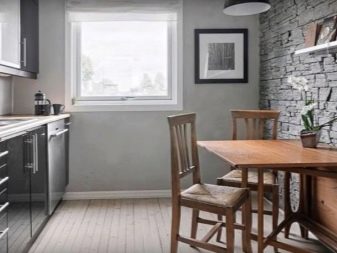
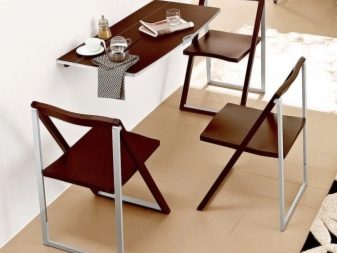
There are many versions of the suspension structures. We list some of them.
- Folding table with mountsfixed on the wall.

- Extending an existing dining table using the hanging part.
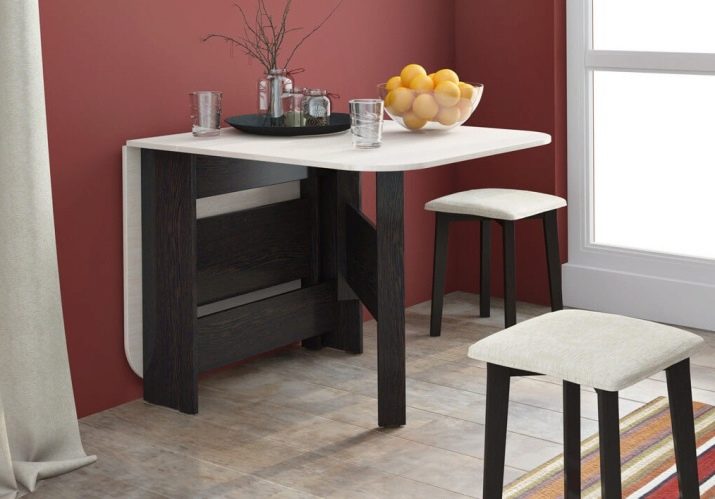
- Attachment hinged table to the windowsill.

- Hidden models. Usually built on guide rails and extend as needed.
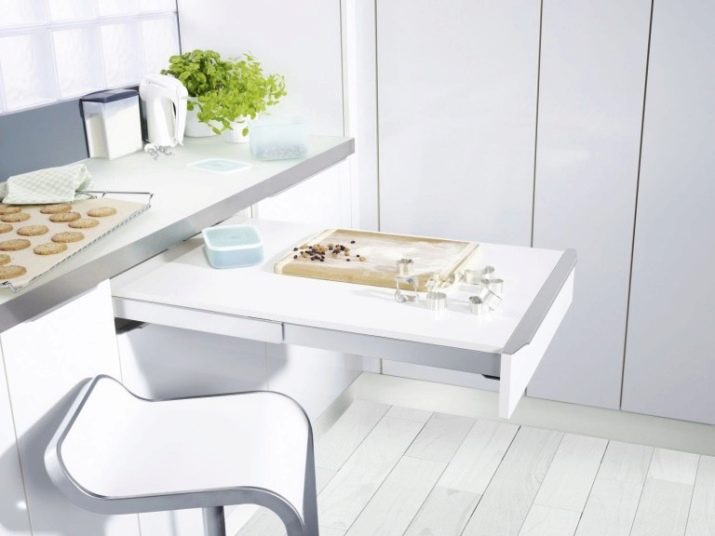
- Unusual shaped tables. They are used in cases when space is very limited, and only a triangular (polygonal) model can be squeezed into free space.
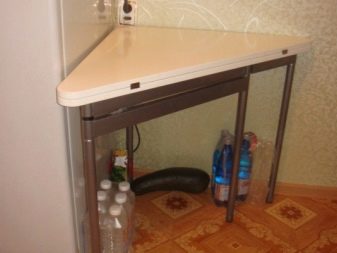
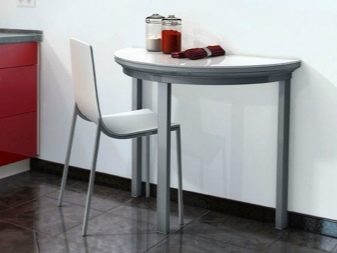
How to do it yourself?
To get started, select the location of the future table. The method of fastening and the shape of the product will depend on this. Then you should choose the material of the table cloth. It could be plywood sheet, chipboard or wood.
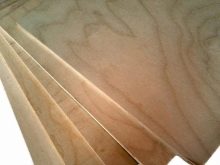
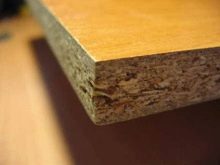

And also prepare:
- fasteners (hinges, screws, anchor bolts);
- additional details - legs (1 or 2), side rails for finishing the product;
- instruments - a drill or puncher (if the table will be attached to a concrete or brick wall), a saw or a jigsaw, a screwdriver (a set of screwdrivers), a grinder.
Measure the size of the area under the table with a tape measure. Then mark out the tabletop canvas, cut off the excess with a saw or a jigsaw.
Further steps depend on the design of your hanging furniture.
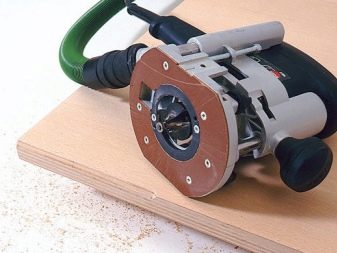
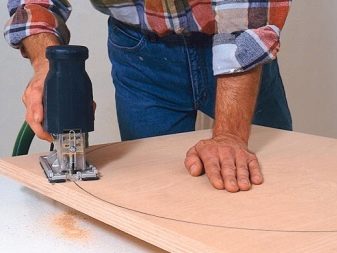
For the simplest option - a wall-mounted folding tabletop on hinges (without support) - you will need to drill holes for the hinges in the wall, then, according to the marking, do the same operation with the tabletop canvas. After that, the hinges are bolted. For reliability in the holes previously you can insert plastic dowels, and only then fix the hinges.

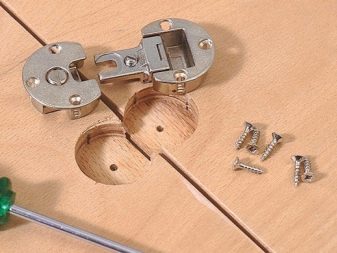
To fix the wall table in a raised state, mark the location of the fasteners (hooks, belt sings, etc.) on the wall, drill the necessary recesses and install the fixing elements.
Test the product - Does it hold securely in a raised position, is it comfortable to sit behind it. If there are no shortcomings, you can try your creation - dine, for example.
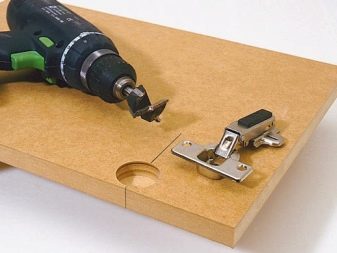

There is nothing complicated in making a retractable model. To do this, in the side faces of the countertops grooves are made for the guide rails. The guides themselves need to be fixed inside the cabinet or other furniture from which the table will extend. And also think over the mechanism for fixing the product in the extended state - so that it does not “walk”. That's all.


The next option is a reclining table with a vertical support. The procedure is similar to the first (simplest) method described above. The difference is that a support is attached to the bottom surface of the countertop. This can be a hinged support or a swivel-angle bracket. And usually such a piece of furniture develops not up, but down.

Here is a description of the manufacturing process for the supporting hinged tabletop.
- Prepare material, fasteners and tools for the job.
- Make a sketch and drawing of the future product.
- Mark a sheet of wood (MDL, chipboard, plywood) according to the drawing.
- Cut off all excess and grind sections so that the surface is smooth.
- Attach rails to the bottom of the countertop around the perimeter with an indent of a few centimeters.
- Next is the support fixture. First, the brackets are screwed to the table, then the other end they are attached to the support. Everything should be fixed in such a way that the leg can be cleaned quietly.
- Now it’s the turn of finishing work. Sand the top surface (cover) of the countertop, paint if desired, cover with varnish, for reliability it is better to make two layers.
- Now you need to attach the side edge of the table to the wall (window sill). To do this, recesses for anchor bolts are drilled in marked places, loops are attached, and that's all - your table is ready!
To improve the appearance and increase the reliability of fastening, a bar made of the same material is attached to the wall as the main surface, and the main part of the table is already fixed to it.
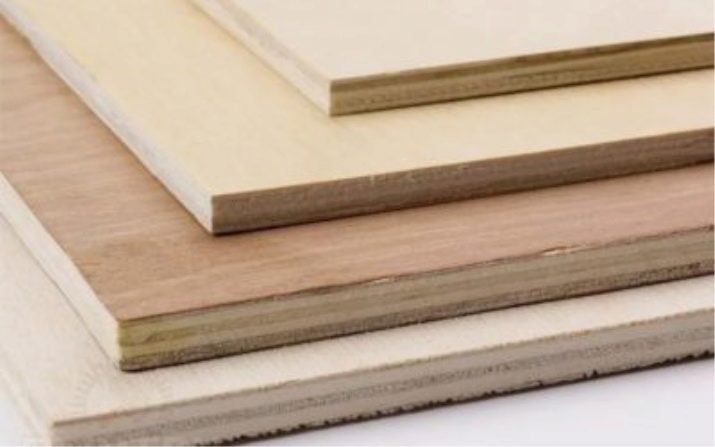


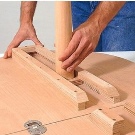

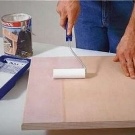
Useful Tips
When choosing the right model and installing the product listen to the recommendations of specialists.
- To preserve the harmony of the kitchen interior, select the material of the countertop to match the overall finish of the kitchen or the installed furniture set.
- The most convenient forms of tables are a semicircle and a rectangle, square and round hinged products are less preferred. Round countertops are difficult to fix, most likely you will have to use suspensions, and even with an equal area of the working surface, if they are laid out, they take up less space due to the smaller thickness.
- Choose models with a vertical support - they are much more stable and reliable than unsupported hinged structures. Moreover, users recommend installing products designed in accordance with current trends - they have one central hinged support, and not two, as in outdated versions. Although it’s up to you to decide.
- Before manufacturing and assembling the product, make a preliminary drawing indicating all sizes and marking the locations of the fasteners. This will facilitate your work and ensure the accuracy of all stages of construction.
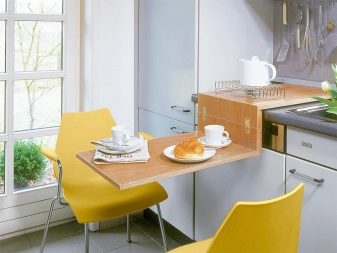
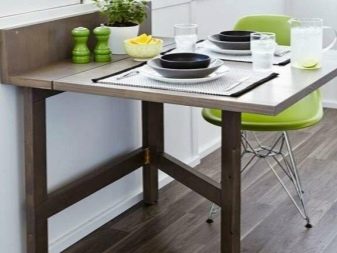
Folding tables are used not only in the kitchen - if you have a school-age child, you can also make a similar hanging desk in his room.
See how to make a folding table in the kitchen in 20 minutes in the next video.









